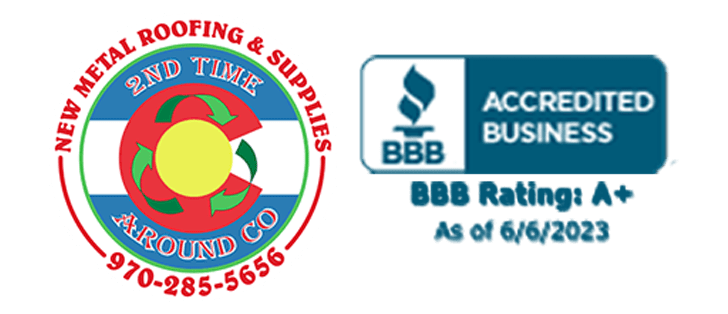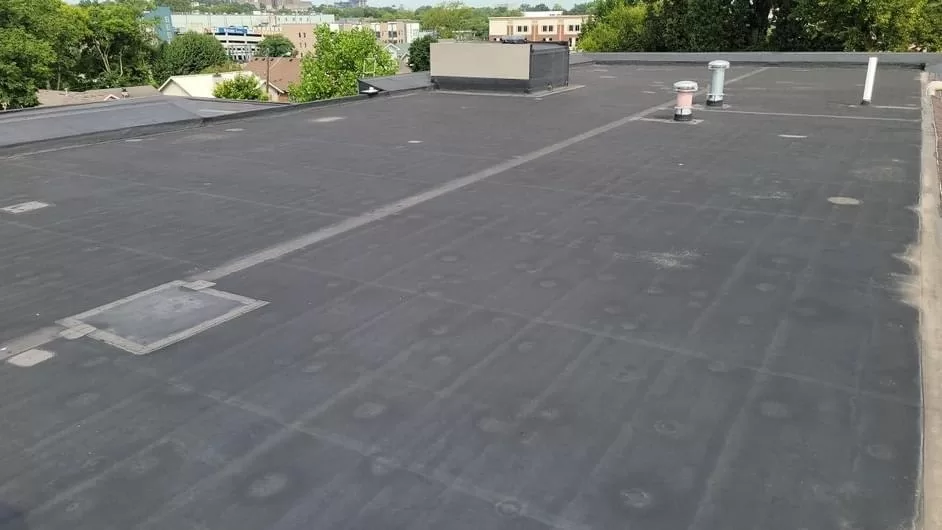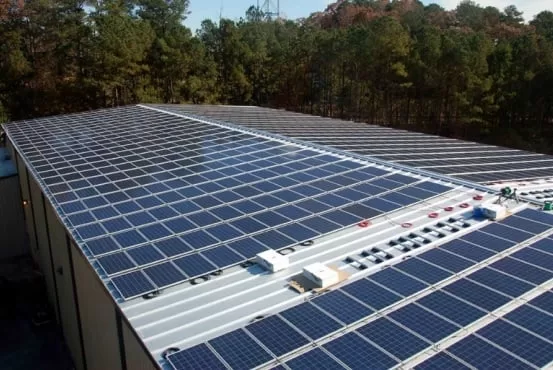When it comes to roofs, one size certainly does not fit all. Roofs can vary significantly in terms of shape, size, and complexity, but one of the most critical factors that sets them apart is their slope. Some roofs have steep slopes, others have multiple slopes on the same house, and then there are completely flat roofs!
In this extensive guide, we will explore the best materials for flat roofs, understanding their properties, advantages, and drawbacks. Whether you are a homeowner, a business owner, or a property manager, selecting the right roofing material for your flat roof is a crucial decision that affects your building’s durability, energy efficiency, and overall aesthetics.
Flat Roofs: A Unique Challenge
Flat roofs present unique challenges compared to sloped roofs. Unlike sloped roofs, flat roofs don’t allow water to run off naturally, making them more susceptible to water pooling. As such, they require materials that offer excellent waterproofing capabilities and can withstand prolonged exposure to standing water.
Flat roofs are commonly found on commercial buildings, industrial facilities, and certain residential structures. Depending on the specific needs and conditions of the building, different materials are used to cover flat roofs effectively.
Exploring the best material For a flat roof
There are several flat roofing materials available in the market today. Each material has its distinct characteristics, and choosing the right one depends on various factors such as climate, building design, budget, and maintenance preferences. Let’s delve into the best flat roofing materials in detail:
1. EPDM (Ethylene Propylene Diene Terpolymer) Rubber Roofing Material
EPDM is a type of black rubber material derived from an oil mixture. Although EPDM is still referred to as such due to its historical manufacturing process, modern EPDM is composed of three monomers, which classifies it as a terpolymer. This roofing material is commonly used on commercial buildings where heat reflection is not a concern. Due to its dark color, it does not create intense glare like some white membrane roofs.
One of the significant advantages of EPDM is its durability, which can extend beyond 30 years with proper installation and maintenance. It provides excellent resistance against weather elements, making it a reliable choice for long-term performance.
2. TPO (Thermoplastic Polyolefin) Roofing Material
TPO is a single-ply membrane roofing material with a white reflective coating. The reflective surface helps keep the space below the roof cooler by reflecting heat away. This energy-efficient property makes TPO a popular choice for those seeking to reduce air conditioning costs during hot weather.
Cost-effectiveness and ease of installation are other advantages of TPO roofing. However, as a relatively new material in the market, finding experienced professionals for TPO repair and maintenance can be a challenge.
If you’re looking for expert advice and top-notch roofing services for your flat roof, 2nd Time Around is here to assist you. Our team of skilled professionals is dedicated to providing superior roofing solutions, ensuring the long-lasting protection of your property. Contact us today for a free consultation, and let us help you choose the perfect flat roofing material for your needs!
3. PVC (Polyvinyl Chloride) Roofing Material
PVC membranes have been used as flat roofing materials for a considerable time. They are well-known for their energy efficiency, fire resistance, and durability. The reflective coating on PVC roofs helps keep the building’s interior cooler, reducing cooling costs during summers.
With proper installation, PVC roofs can last between 30 to 40 years, providing a reliable long-term solution for flat roofs. Additionally, they come in various colors, allowing for better integration with the building’s aesthetics.
4. Modified Bitumen Roofing Material
Modified bitumen roofs are another popular choice for flat sections of residential roofs. They are made primarily of asphalt and resemble three-tab asphalt shingles but in a more flexible form. Modified bitumen roofs have a self-adhesive bottom, making installation easier and quicker.
One of the advantages of modified bitumen roofing is the variety of colors available, allowing homeowners to match the roofing material with their building’s color scheme. However, the lifespan of modified bitumen roofs is relatively shorter, typically lasting around 15 years before requiring replacement.
5. Built-Up Roofing Material (BUR)
Built-Up Roofing, also known as BUR, is one of the oldest methods of flat roofing. It involves layering asphalt, boards or other materials, small rocks, and sealing it with more asphalt. BUR roofs are highly durable against storm damage and provide a safer surface to work on compared to membrane roofs.
However, the weight of BUR roofs can be a concern for some buildings, as the multiple layers of asphalt and rock can add significant load. Proper structural evaluation is essential before considering a BUR for your flat roof.
6. Standing Seam Metal Roofing Material
Standing seam metal roofs are more commonly associated with steep slope homes, but they can also be used on flat roofs. This roofing material is comprised of several metal panels that lock together at the seams, allowing for expansion and contraction due to temperature changes.
Standing seam metal roofs are known for their durability and longevity, lasting up to 50 years with minimal maintenance. They offer excellent resistance against weather elements, making them a reliable option for flat roofs.
Bottom Line
Choosing the best material for your flat roof is a critical decision that impacts the longevity, energy efficiency, and overall performance of your building. Assess your building’s specific needs, consider the climate, and consult with experienced roofing professionals to make an informed decision.



